"Unveiling the Symphony of Growth: Sensory Play in Early Childhood Education@ Sreenidhi International School.
I am an EYP facilitator with a rich 25-year journey, where my commitment to innovative teaching practices has been pivotal in shaping students for lifelong learning. My passion for EYP resonates in fostering global citizenship, transcending traditional academic boundaries.
Introduction
The canvas of early childhood education is painted with vibrant hues of curiosity and imagination. Amidst this intricate masterpiece, the role of sensory play emerges as the silent maestro, conducting a symphony of development for young minds aged 2 to 7. Beyond the conventional boundaries of academics, sensory play becomes the cornerstone that not only enriches cognitive skills but lays the foundation for lifelong learning and essential life skills.
1: Understanding the Essence of Sensory Play
In the early years of childhood, sensory play acts as a gateway to understanding the world. From the soft textures of playdough to the melodic sounds of rattles, each sensory experience sparks a connection between the child and their environment. By engaging multiple senses simultaneously, children develop a more profound understanding of the world around them.
2: Cognitive Growth Beyond the Classroom.
Sensory play is not confined to the classroom; it extends its tendrils into cognitive development. Through hands-on experiences, children enhance their fine and gross motor skills, laying the groundwork for future academic success. The tactile exploration of different materials sharpens their sensory processing abilities, a crucial aspect for cognitive advancement.
Section 3: Beyond ABCs: Life Skill Development.
While traditional learning focuses on ABCs and 123s, sensory play takes education to a realm that is equally important: life skill development. Whether it’s cooperating in a sandcastle construction project or negotiating sharing during a water play activity, etc, children learn vital social and emotional skills that form the bedrock of their future interactions.
Certainly! Let’s enhance Section 4 with the additional activities:
4: Evidence from the Classroom
In my own teaching practice, I’ve witnessed the transformative power of sensory play through a myriad of activities. Balancing games, where children navigate through obstacle courses, not only improve physical coordination but also enhance their spatial awareness. The thrill of constructing intricate train tracks in a team-building activity not only fosters collaboration but also sharpens their problem-solving skills.
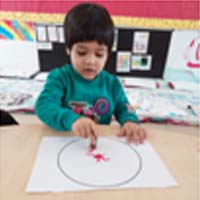
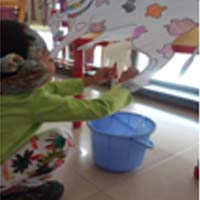
Innovative & creative learning engagement on UOI community helpers (Milkman)
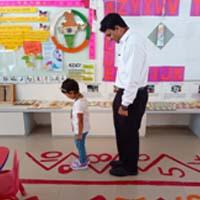
Transparency in showcasing learning through SLC.(Sensory Play)
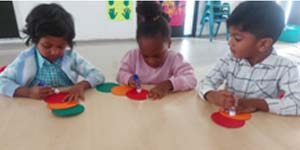
Making traffic lights Handson UOI
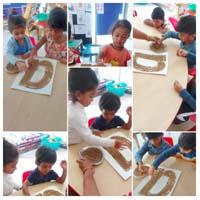
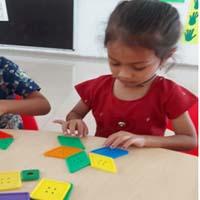
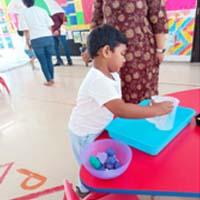
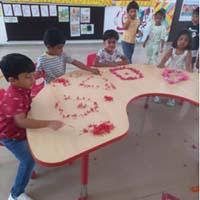
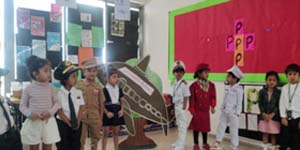
Moreover, the integration of kinaesthetic, acoustic, visual, and tactile senses is at the heart of our classroom activities. From the rhythmic beats of drums in a music exploration session to the soft touch of textured fabrics during storytelling, each activity is meticulously designed to engage and stimulate multiple senses. This holistic approach ensures a well-rounded sensory experience, contributing to a more comprehensive development of the child.
5: Tailoring Sensory Play for Different Age Groups
Recognizing the diverse needs of children within the 2 to 7 age range, it’s crucial to tailor sensory activities accordingly. While the younger ones might revel in the tactile delights of finger painting, older children could benefit from more complex challenges like sensory obstacle courses that encourage problem-solving and coordination.
Conclusion
As we immerse ourselves in the enriching world of sensory play, we find that its impact transcends the immediate moment. It lays the groundwork for a lifetime of curiosity, resilience, and collaboration. By embracing sensory play in early childhood education, we don’t just teach children; we sculpt the architects of a future where learning is a harmonious symphony of experiences.
Author Name : Sundari Balatripura Gade
